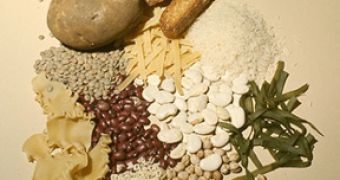You may have heard that the snake venom in some species starts the digestion of the prey before being swallowed. Spiders put into their meals abundant saliva quantities that turn the body of an insect into a juice that the spider sucks.
But even if a human doesn't start digesting the juicy steak from its mouth, the mashed potatoes or the apple pie can be "poisoned" in the mouth. You will start the mouth watering even when thinking about or smelling them.
This happens because the saliva accumulating in your mouth is really a digestive juice and not an indicator that the food is delicious. Digestion starts with the first bite of food and our salivary glands secrete up to 1.5 liters of saliva daily that, besides moistening the aliments, contains enzymes called salivary amylases and breaks down starches, a complex sugar made by multiple molecules of glucose, into dextrose or other types of simpler sugars (which in the intestine will be degraded to glucose which is absorbed into the blood stream).
A new research discovered that humans carry extra copies of the gene encodes for salivary amylase and this could be one of the factors that spurred human evolution. In the human genome there are more copies of the gene than inside the ape genome: there were as much as 15 copies in the human genome, while chimpanzees carry just two.
The research also encountered a connection between the number of copies of the gene and the starch levels on a human diet.
Members of the Hadza tribe, a Tanzanian relict Bushmen group, who are hunters and rely heavily on collected starch-rich tubers and roots, carry more copies of the gene than their neighbors, the Datog, who mostly raised livestock and their milk and meat based diet is poor in starch.
This enhances the idea that diet changes in early humans boosted the simultaneous boom in the size of human brains and bodies, and the biological success of our species. Apes rely on fruits and leaves which are poor in starch, but richer in simple sugars, that do not require amylase for digestion, like glucose and fructose.
But early humans entering the savanna had to vary their diet towards tubers, roots, beans and grains, which are rich in starch. Starch comes with much more energy supply than fruits and leaves and this may have been a factor enhancing our biological success.

 14 DAY TRIAL //
14 DAY TRIAL //